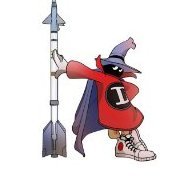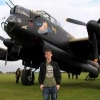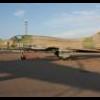-
Posts
721 -
Joined
-
Last visited
About XV571
Contact Methods
-
Website URL
http://
-
ICQ
0
Profile Information
-
Gender
Male
-
Location
Bristol, UK
Recent Profile Visitors
4,172 profile views
XV571's Achievements

Obsessed Member (4/9)
414
Reputation
-
As Pete says, the #4 Thunderbird flew directly behind the lead jet. Phantoms are notorious for their smoky exhaust plumes so what you are seeing is simply the soot deposits from the #1 jet on the tail. Later modifications reduced the amount of smoke generated by the J79 but never entirely eliminated it. Here's a video of the Thunderbirds F-4Es in action. You can see the deposits on #4's tail at about 5:30:
-
Hi Andy, Try emailing ModelsForSale, they are the reseller of the AlleyCat range: https://www.modelsforsale.com/catalog/product_info.php?products_id=1030642&Alley-Cat-1/48-48002C-Harrier-100%-LERX I'm sure it's only temporarily unavailable but if they know there's demand then they'll probably ask Alex to include some as part of the next production run. I see they currently have lots of the Phantom seamless intakes, which seem to be one of their best sellers, along with a few other items that weren't in stock a few weeks ago. HTH, Jonathan
-
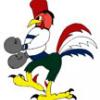
Need help with F-4C Phantom II Ejection Seat (MB Mk.5)
XV571 replied to Johnson's topic in Aircraft Cold War
Hi John, Strictly speaking neither of the Sparkit seats is applicable for a F-4C. The ones they sell are for US Navy Phantoms. These have a different system for the Personal Survival Packs and how they provide emergency oxygen to the crew during and after ejection compared to the Air Force version. The USN seat has the oxygen system in the bottom seat cushion and there is a hose connector situated in the rear right of the seat that the crew connect to. The bottom cushion also has a pressure gauge in the forward left corner. The USAF use a different system which has the emergency oxygen in a bottle located in a cut out section of the back pad. You can see the bottle in the photo of the Mk7 seat above (the bright green cylinder). There is also no contents gauge in the bottom cushion so you'd have to remove that from the seat. If you're not too bothered by the connector version and the BuNo effectivity is correct, I'd go for the early seat. Sparkit state their late seat was used from BuNo 153005 which was a F-4B-26-MC. Col. Old's Bolo mount 63-7680 is a F-4C-21-MC and Scat XXVII 64-0890 is a F-4C-24-MC so it would be more appropriate for the earlier production blocks whichever aircraft you plan to build. HTH, Jonathan -
While searching for details on some of the lesser known C-130 operators I discovered a Spanish blog which has several cockpit photos of Hercules T10-03 /31-03 at the Madrid Air & Space Museum. There are, inevitably some missing items but it does show the bulkhead and bunks. The upholstery and colours may be somewhat specific to EdA Herks though 😄: https://gasparferrer.es/wp/galeria-dumbo-03/ The site has a lot of useful references too so it's well worth looking around the other areas as well. HTH, Jonathan
-
Looking at the Fujimi website it would seem that the F-14s are currently out of production so, to be honest, it's unlikely that they'll have spares in stock. The loops aren't too hard to make yourself from fine wire or even thread. Twist two lengths together, make the loop to the required size by wrapping it around something like a cocktail stick, coat in superglue to fix the two strands together. Trim, paint then install. If you mess it up it's cheap to try again until you're happy with the results. There are lots of "how-to's" out there on the subject; here's one example: If you don't feel up to trying making your own, Eduard have a Martin Baker ejection seat handle set: https://www.hannants.co.uk/product/ED73611?result-token=7w0zU I'd consider using the Mk5 or Mk7 types rather than those labelled as for the GRU7 (the F-14A seat version); they're shaped more like the actual handles. Assuming Fujimi reply in the affirmative, it'll almost certainly still be cheaper than paying postage from Japan and possibly having to pay for each entire frame which has the two small parts you want. HTH, Jonathan
-
That particular "F-4D style" version of the radome sensor pod was found on F-4Bs fitted with the AN/ALQ-51 /-51A /-100 Shoehorn Mod 3 DECM suite. You can see the history and installation here: https://phantomphacts.blogspot.com/p/sanders-analq-51-51a-100.html. The figure showing the installation is about halfway down the page. It supplanted the more widely known 'parrots beak' of the Mod 2 version. This was followed by AN/ALQ-126 which introduced the well known intake shoulder fairings seen on the F-4N and later F-4Js. Jonathan
-
Hi Screeno As has been mentioned, XV567 at that time was still in the Dark Green/ Dark Sea Grey/Light Aircraft Grey Tactical Scheme 😉 There were quite a few FG.1s still painted like that in the early 1980s, I think the very last 43 Squadron jet was XV587/G; it was still in those colours to at least May 1986. According to the Aircraft Illustrated Phantom special. XV567 had changed to the AD Greys by mid-1984. The closest sheet would be Xtradecal sheet X72294: https://www.hannants.co.uk/product/X72294?result-token=MUFUy. That gives you nearly everything for XV567/I in that scheme - you can invert the 9s and by careful trimming of the 'R' could get you the 'I'. Personally I think the Gamecocks are terrible, they look squashed and are the wrong colours. For me, a better option would be to use either the ones from Modeldecal sheet 64, or items #60 & #61 on Modeldecal sheet 89 https://www.hannants.co.uk/product/MD089?result-token=4KtDs and apply them on a white disc of the right diameter. Even the kit ones seem closer to the originals. One thing to watch out for, being ex-Royal Navy, even in 1982 XV567 is likely to not have received the ILS aerials (the small 'fins' sticking out under the rectangular RWR box on the vertical stabiliser) so you'll need to remove these. Maybe your photo shows if they're installed or not. This is XV568/T, another ex FAA Phantom, in 1981 still wthout them: HTH, Jonathan PS For adding photos, see here:
- 9 replies
-
- 1
-

-
- F4 Phantom II
- Falklands
-
(and 1 more)
Tagged with:
-
Good work on the belly strap, are you aware that it actually extends almost all the way to the wing fold break? This is from the USAF Structural Repair Manual but is the same for the Navy version. The ends look like 'Detail M' at the bottom middle: Reinforcing strap F-4E,G Structural Repair Manual_Page_1 by Jonathan Morgan, on Flickr The difference is correct; the Spey auxiliary air doors are located forward of where they are for the J79 Phantoms. Here's pictures of first the Zoukei Mura F-4G and then the Academy F-4C compared to the Hasegawa FGR.2: ZM-F-4G-Has-FGR2-1 by Jonathan Morgan, on Flickr Aca-F-4C-Hase-FGR2-1 by Jonathan Morgan, on Flickr One tip if it's not too late, I recommend you fit the lower forward section F40 to the lower wing assembly. It makes it easier to line up the two to avoid any potential step and you can add a strip of plasticard to reinforce the joint before you install the cockpit assembly. HTH, Jonathan
- 41 replies
-
- 4
-

-

-
- 1/48
- Phantom F-4J (UK)
-
(and 1 more)
Tagged with:
-
Yes you can use that Academy Phantom for a F-4J(UK). The (empty) AN/ALQ-126 fairings mounted on the intake shoulders are in the kit, you should use parts K21 and K22. Don't use the 'long' versions, these are for use on the F-4N. You'll also need to fit the belly reinforcing strap just forward of the MLG bays as this was added during the refurbishment programme before delivery to the RAF. You have the choice of photoetch Eduard), resin (Flying Leathernecks) or 3D (Quinta). Strictly speaking they're for the Meng F-4 but they should be easily adaptable. I also recommend the Hypersonic slotted stabilators to correct the multiple faults with the kit ones plus the nose ECS intakes (the kit ones are the wrong shape and place. These are small upgrades but, in my view, improve the overall look when it's finished. Lots of information here: here: and here: HTH, Jonathan
- 41 replies
-
- 2
-

-

-
- 1/48
- Phantom F-4J (UK)
-
(and 1 more)
Tagged with:
-

Advice on painting the Stabilators Revell 1:32 Wild weasel F4G
XV571 replied to MarkTurner's topic in Aircraft Modern
I think Ben has pretty much nailed it for the antennae. Here's my take on what goes where in your two photos, hopefully it'll help in locating the parts along with the NMUSAF F-4 pictures: 'Stage' refers to the instructions for the 5994 boxing Revell F-4G antennae-1 by Jonathan Morgan, on Flickr From the photo of the QMT set on Scalemates, R7 looks to be the WSO rear view mirrors. QMT provide two but generally F-4Gs used only one mounted centrally on the canopy frame. I agree that R6 looks like the VOR antenna on the left lower intake. It's not easy to make out in either photo but R2 looks like the gun compartment intake door, but this was deleted on the G as there was no longer any need to vent any gases generated by the gun firing so it's somewhat redundant! For more information on what goes where I recommend you download the instructions for the 1/48 Zoukei Mura F-4G: https://www.zoukeimura.co.jp/en/download.html#dl_sws4814 this should help you in locating the positions of most of the items in my photo. The VOR antenna position is in step 34 (part E-1) on page 25. HTH, Jonathan -
Hi Mark, Ventura have a sheet with 8 inch Dull Red serial letters and numbers: https://www.hannants.co.uk/product/VA4892?result-token=hqEbr It has multiple different letter styles so one should match, or at least be close enough to, the ones in the photo of BD949. HTH, Jonathan
-
If you can't find the Xtradecal sheet, Flightpath also has one with 63Sqn and 234Sqn Green/Grey Hawks: https://davidjparkins.com/product/raf-hawk-t1a-decal-sheet/
-
Yes, they did 😀 According to Modeldecal sheet 76 and my 1988 Military Aircraft Markings the F-4J(UK)s were coded as follows: T ZE350 I ZE351 G ZE352 E ZE353 R ZE354 S ZE355 Q ZE356 N ZE357 H ZE358 (lost August 1987) J ZE359 O ZE360 P ZE361 V ZE362 W ZE363 Z ZE364 This was carried over into the FGR.2s as can be seen in Dave's post. There was indeed a Q (XT895) and an N (XT897) as well. I think they kept the same codes as the F-4Js (except for H) but used Y instead in respect for the lost crew of ZE358. 56 Squadron did a similar thing towards the end of Phantom operations with their red tail jets when they were the last FGR.2 operators along with 74Sqn. They coded theirs with P H O E N I X: https://www.flickr.com/photos/133794880@N04/51841010214
-
I assume that by 'painted jets' Will is referring to the Heritage F-15s in 75th Anniversary D-Day markings. Two of these were F-15Es and one was a F-15C; they are on Furball sheet 48-071: https://www.furballaero-design.com/ProductDetails.asp?ProductCode=48-071. By mentioning Wolfpak I believe he's looking for a 1/72 sheet. Looking on the Fantasy Printshop site I couldn't see one of the Heritage subjects on a Wolfpak sheet but there are a pair of 48TFW F-15C MiG killers from 1999 on their 'Workin' Nights' sheet 72-034. This appears to be still available: https://www.fantasyprintshop.co.uk/product/wolfpak-72-034-workin-nights/ If you're after 1/48, Furball also did 48-072 for USAFE F-15A/C/D Eagles: https://www.furballaero-design.com/ProductDetails.asp?ProductCode=48-072 That has options for four 493FS F-15Cs in 2019. Hannants has both Furball sheets in stock at the moment, which would save a bit on postage 😄. For 1/32, PK Productions have 32-001 https://www.pkproductions.de/shop/decals/32-001-big-usaf-mod-eagles-1-32/. These are the most recent with two jets from 2021 (and one from 2018) Apart from the previously mentioned Caracal and Astra/Daco sheets the only other Lakenheath F-15C/D sheet I'm aware of is the long OOP Afterburner sheet 48-005: https://www.scalemates.com/kits/afterburner-decals-48-005-lakenheath-eagles-1999-2006--246967 - that's probably rarer than either of the above two sheets! HTH, Jonathan
-
Hi Gary, Since you specifically mentioned XR749 here is the aircraft's history as listed in the Aircraft Illustrated Special on the Lightning by Roger Lindsay: "XR749 c/n 95214. first flight 30.4.65. Retained BAC and partially modified by F6, then de-modded to F3. 4.10.67 60 MU (Maintenance Unit). By 30.10.67 'Q' 56 Sqn. 26.10.71 60 MU. 30.10.72 Binbrook. 21.11.72 'Q' 5 Sqn. 6.76 store. 2.77 'Q' 5 Sqn. 5.78 store. 10.78 'Q' 5 Sqn. 30.1.80 store. 2.8.82 St Athan, returning 16.8.82 in light grey scheme, then LAF (Lightning Augmentation Flight) and store. By 14.12.82 'BM' 11 Sqn. 3.83 store. 5.83 'BM' 11 Sqn. 11.84 'BO' 11 Sqn. 1.85 'DC' LTF. 2.85 'DA' LTF. 1.10.85 Blue fin and spine in 10th anniversary of LTF (Lightning Training Flight) scheme. [retaining the DA code] 3.86 store. 19.5.86 marked in 'Q' 56 Sqn commemorative scheme. By 14.11.86 markings removed, but still coded 'Q' with 'D' type roundels used by all three Binbrook units sporadically until 17.2.87 when took off en route for Lossiemouth, only to make emergency landing at Leuchars where allocated 8934M for battle damage repair duties." As you can see each squadron opted to continue using the initial 'Q' code letter until 1982 when a two letter system was introduced for UK based units to additionally identify which the aircraft was allocated to. This was in squadron numerical order on each base. At Binbrook the codes would therefore be: Ax = 5Sqn; Bx = 11Sqn; Cx (not allocated but there was rumour of a third squadron being formed, which might have been 74Sqn but that ultimately went to the F-4J(UK) unit); Dx = LTF. Another example was at Leuchars where: Ax = 43Sqn, Bx = 111Sqn and after the Operational Conversion Unit moved from Coningsby - Cx = 228OCU The code letter can also identify which aircraft is the commander's jet or a specific role. While you would expect the 'boss' to use 'A' some units deviated from this. An example is II(AC) Sqn who used 'S'. This is because they would line up their aircraft to spell 'SHINY TWO AC'. Sometimes they woud add letters or numbers; such as II , E and R. Additionally they would usually allocate 'T' to the squadron's trainer or dual control aircraft. HTH, Jonathan


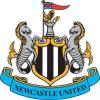

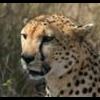

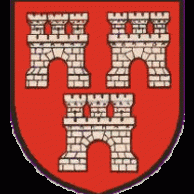
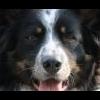
.thumb.jpg.d63052df9f30de247fb49bf44f442289.jpg)
